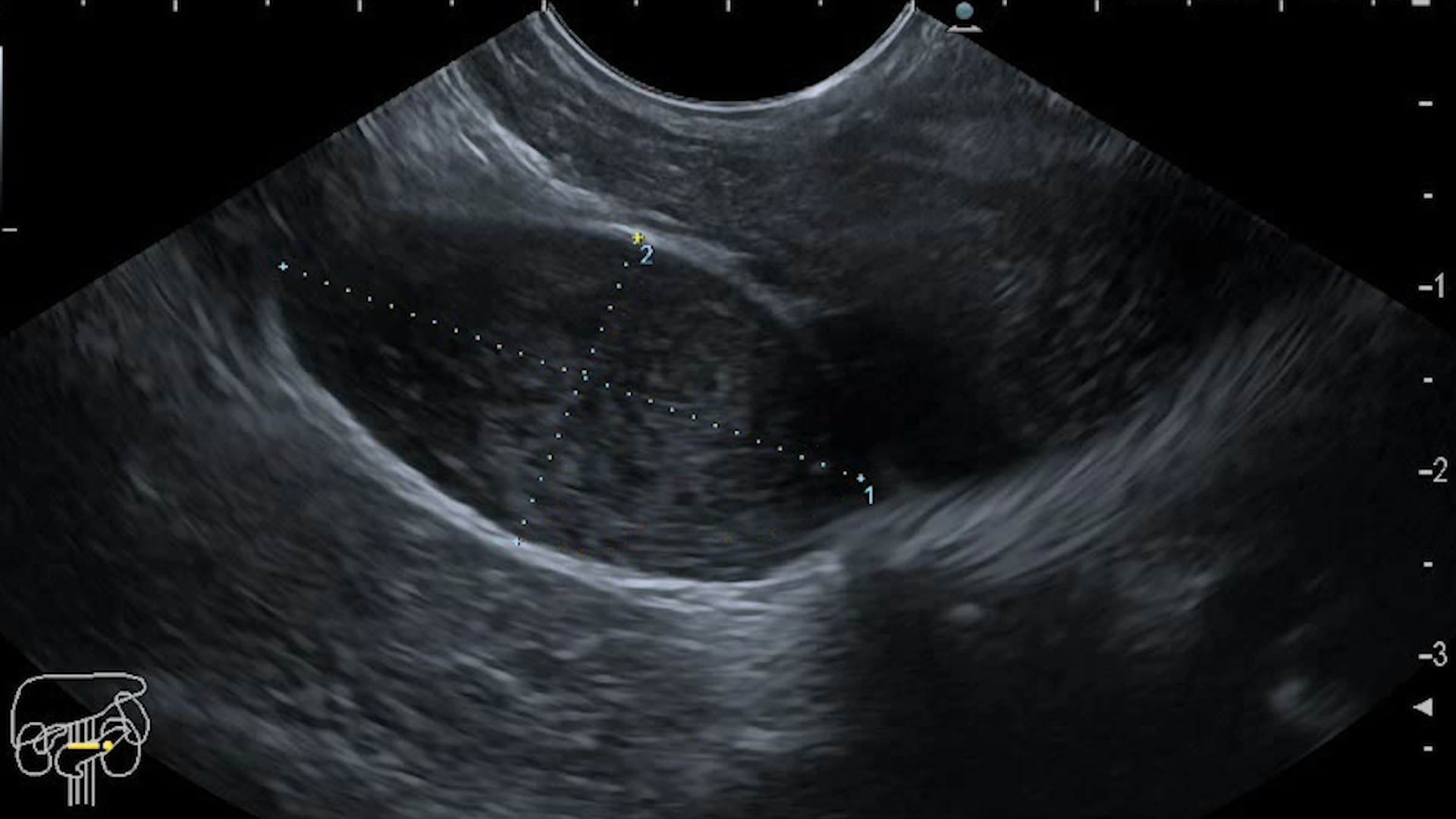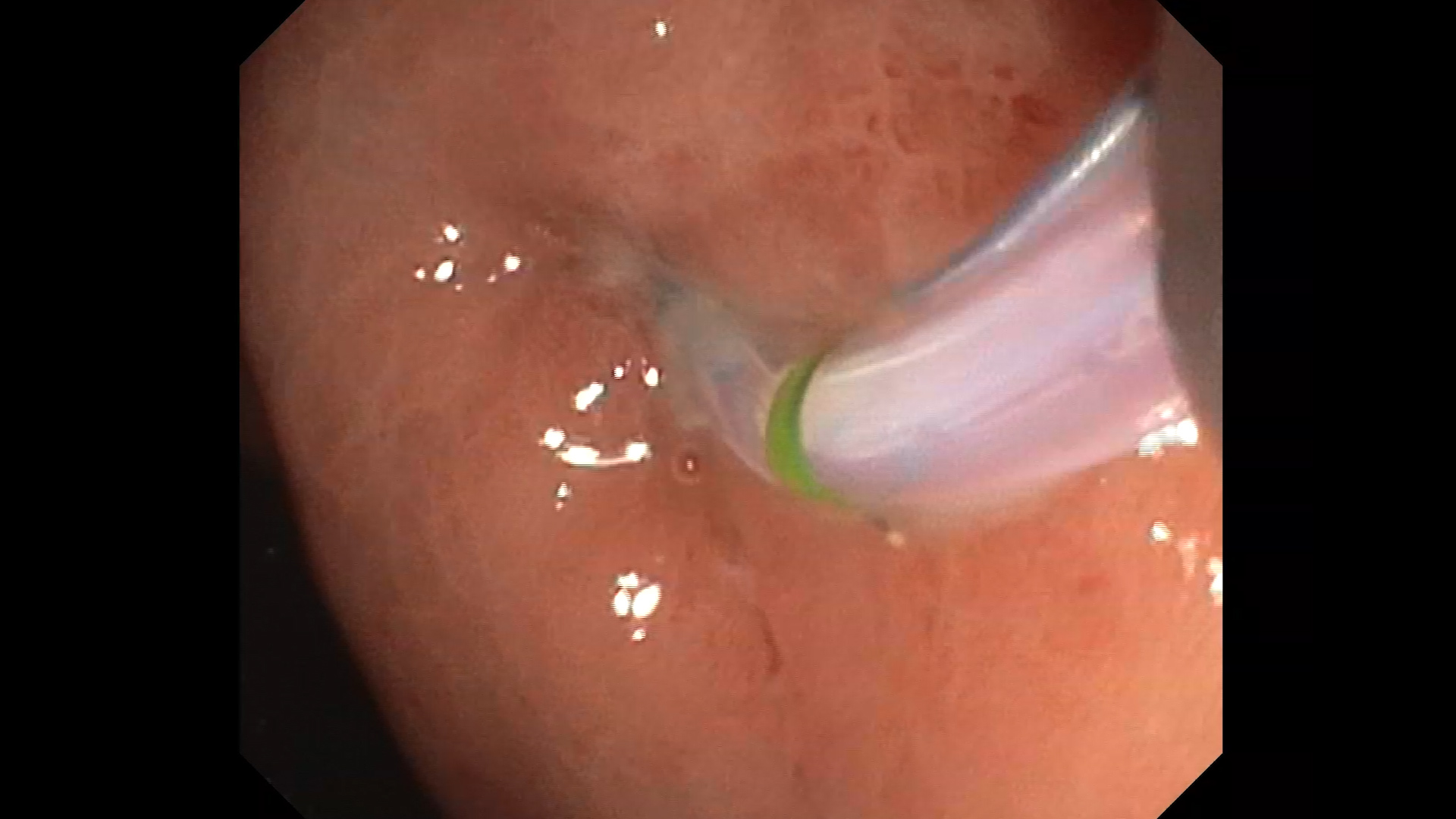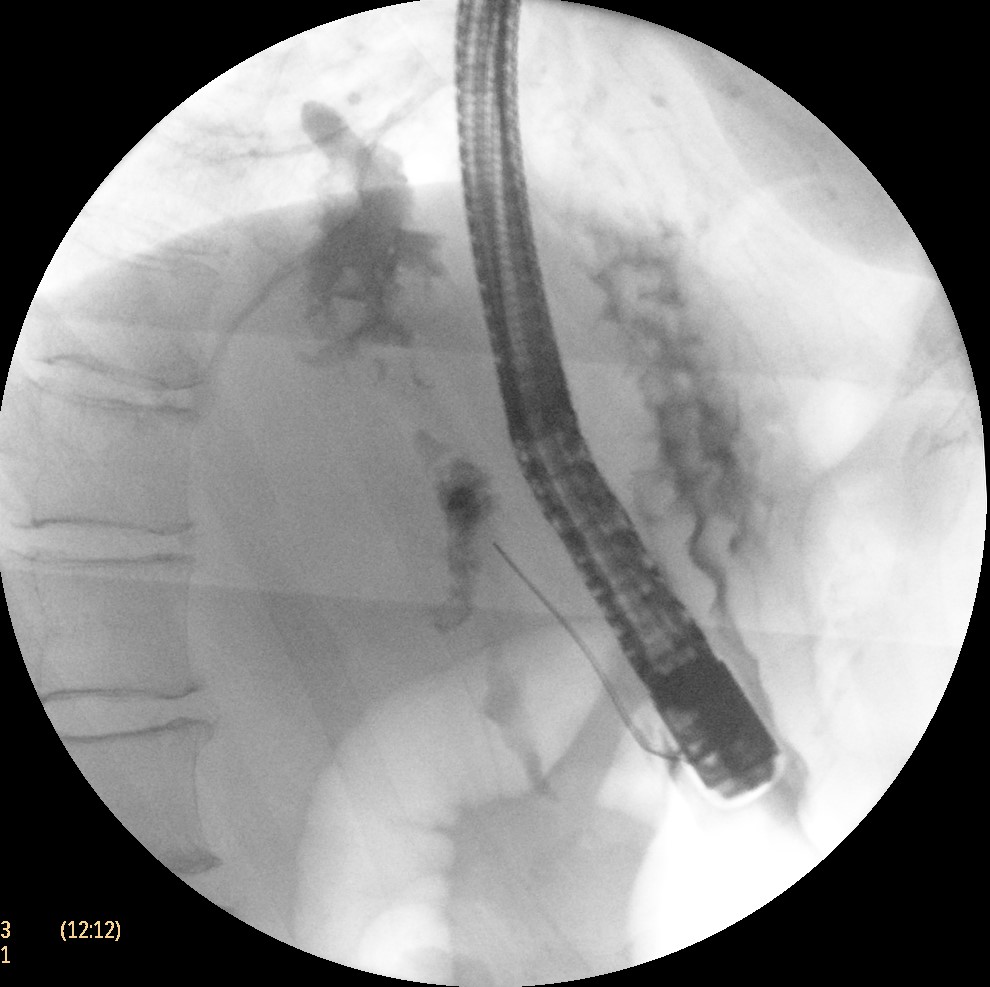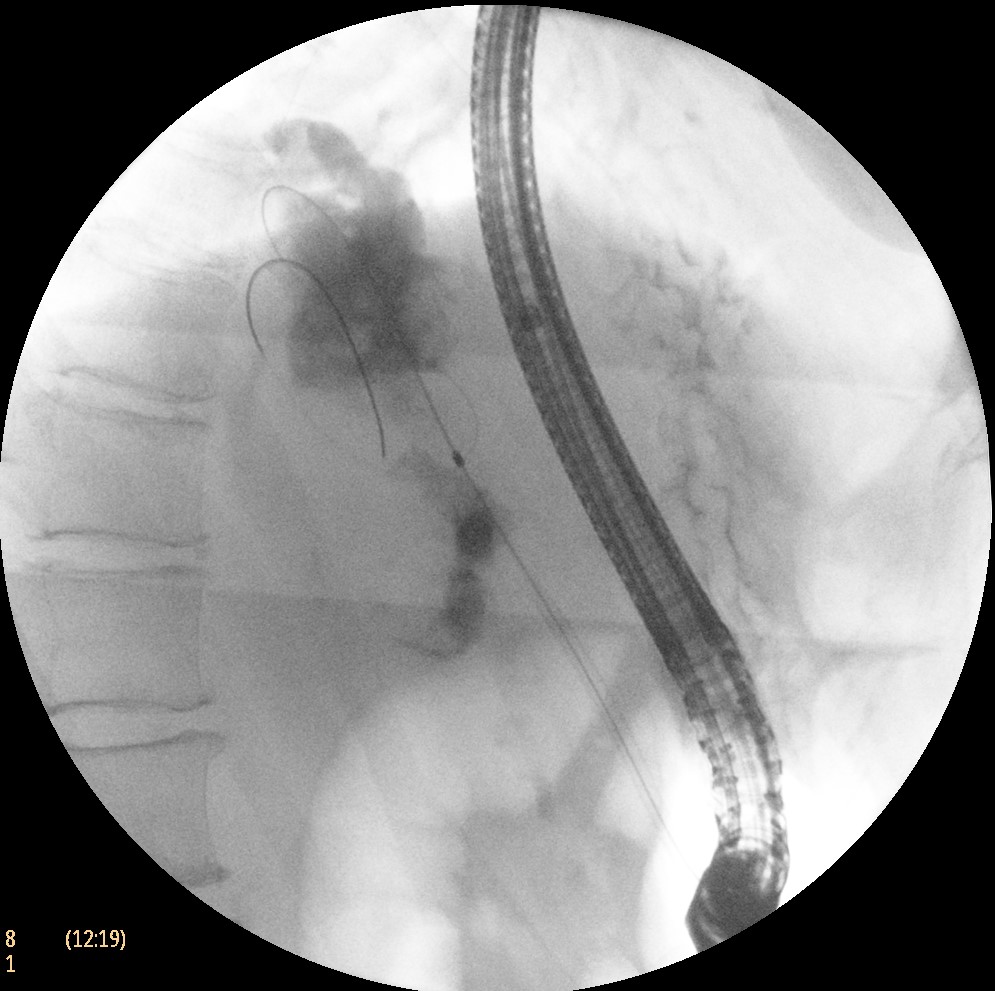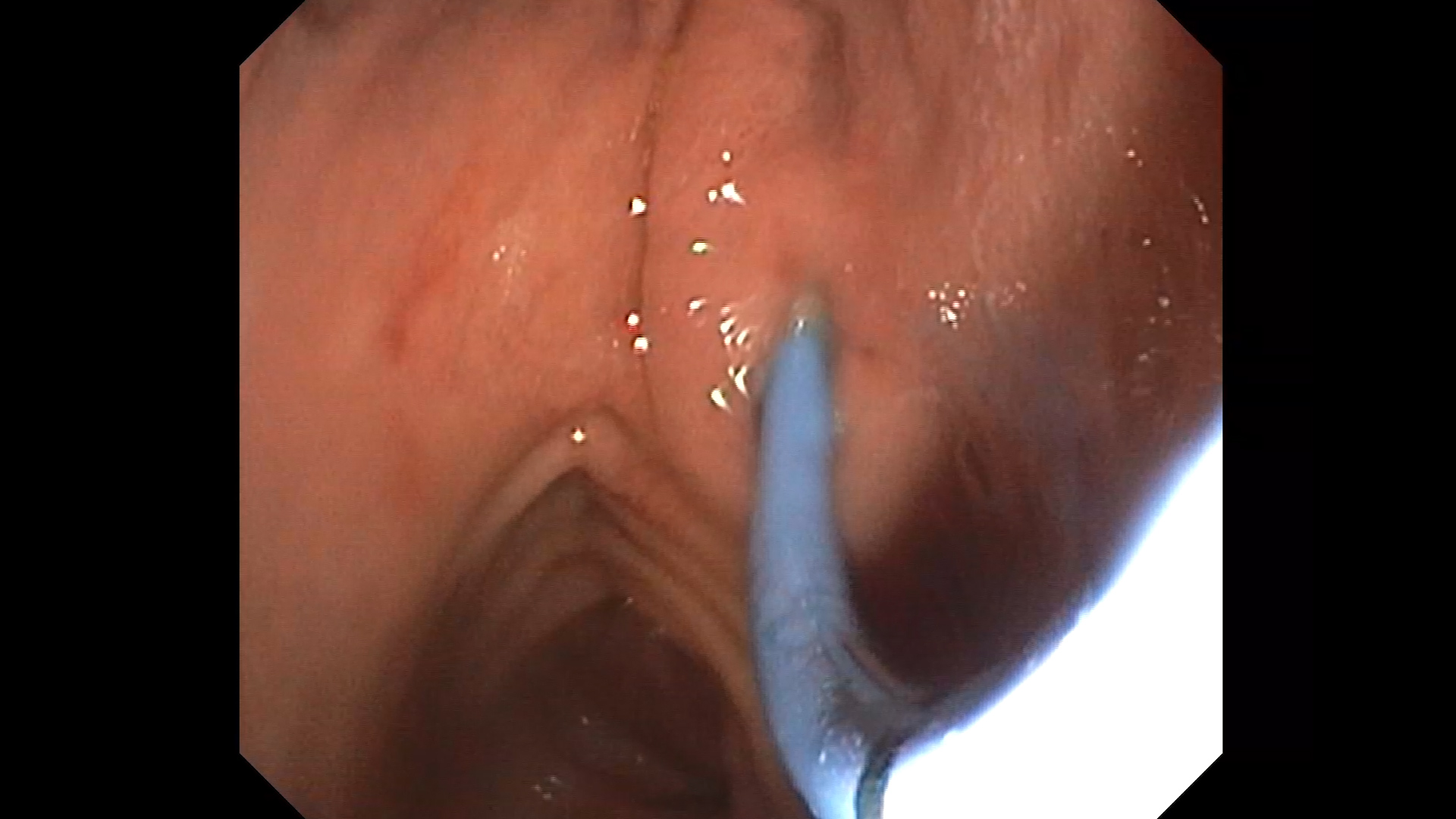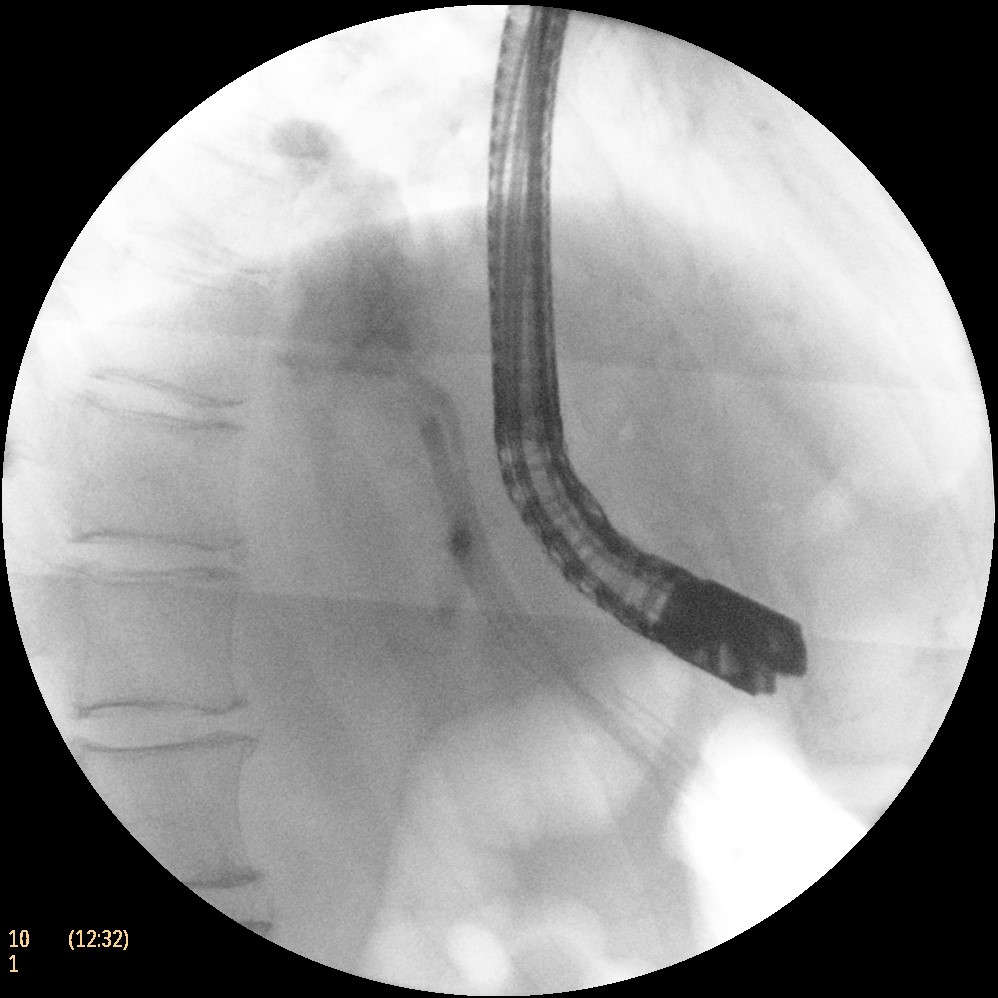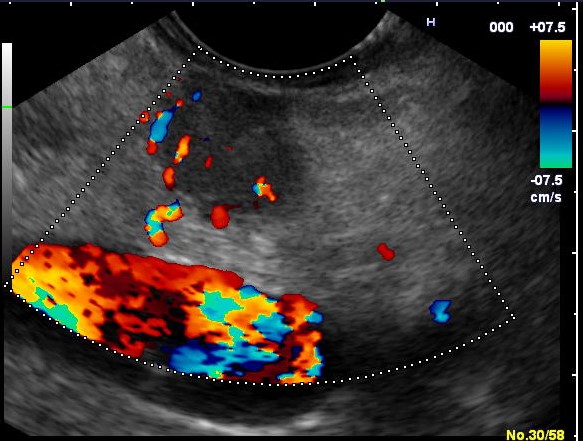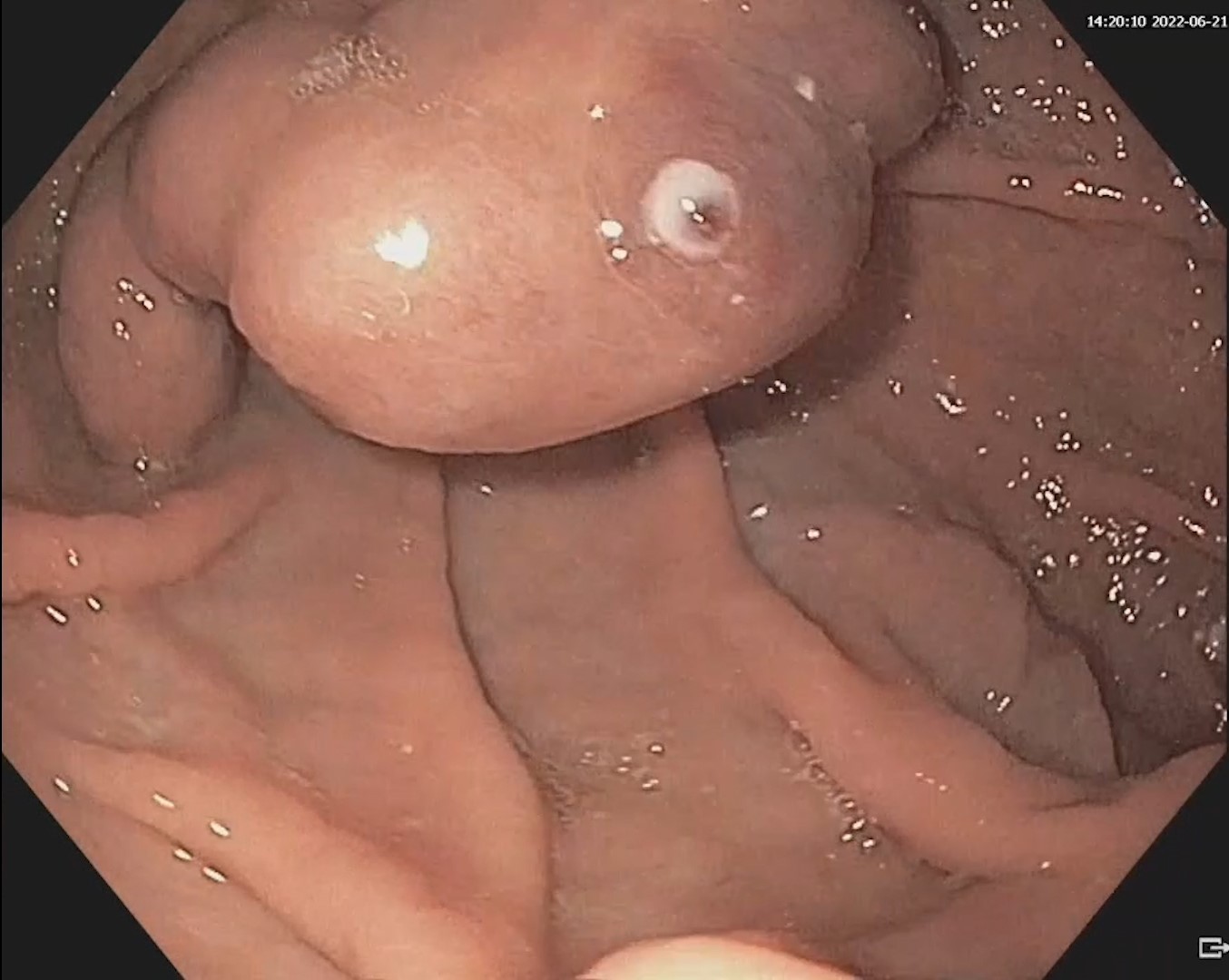See other cases
Plastic is fantastic: rescue drainage with plastic stents after LAMS drainage of a pancreatic pseudocyst
A 54-year-old patient presented to the emergency room with increasing upper abdominal pain, nausea and vomiting, 6 months after an episode of acute biliary pancreatitis with necrotic hemorrhagic collections.
Clinical: The abdomen was slightly distended with diffuse pain on palpation
Biological: Mild anemia (Hb 10.7 g/dL) and elevated C-reactive protein (CRP 378.5 mg/L)
MRI with MRCP sequences identified a necrotic-haemorrhagic pancreatitis with intrapancreatic pseudocysts located at the cephalic and body level. The peripancreatic fluid collection measuring 120 x 80 x 60 mm had less than 10% necrotic content and was located between the posterior wall of the gastric body and the pancreatic tail.
EUS examination showed a large collection with debris inside, non-enhanced during contrast-enhanced harmonic imaging. Drainage was performed with a lumen apposing metal stent (LAMS) of 15 mm diameter (HotAxios, Boston Scientific, USA), without complications. Two weeks later the patient was readmitted for pain and fever. An upper endoscopy was performed showing the stent, which was clogged with blood clots. Consequently, we decided to remove the LAMS and replace it with two double-pigtail plastic stents. The stent exchange underwent without any complications, the patient had afterwards a favourable clinical and biological evolution.
Rescue exchange of LAMS with plastic stents for a large pancreatic pseudocyst
Several systematic reviews and meta-analyses indicated that metal stents could be superior to plastic stents for endoscopic transmural drainage of pancreatic fluid collections due to their higher clinical success rate, shorter duration of the procedure and lower intra-procedural adverse events [1-3]. Metal stents have the advantage of a large-diameter lumen, which facilitates better drainage, particularly when debris and/or necrotic tissue are present. They also allow, if required easy and safe access to the cavity for direct endoscopic necrosectomy. However, it is important to acknowledge that metal stents are significantly more expensive than plastic stents, and some early reports raised concerns about delayed bleeding and embedded stents [4]. This is especially valid in patients with WOPN, where stent-related adverse events start developing ≥3 weeks postintervention [5]. Therefore, a tailored approach according to size, extent, type (unilocular vs multilocular, presence of disconnected pancreatic duct syndrome, extension to lower abdomen, etc.) and stepwise response to intervention is advised, when deciding whether to use LAMS or plastic stents [6]. In the case of our patient, plastic stents came to rescue after a LAMS drainage of a large pancreatic cysts with necrotic debris was complicated by stent occlusion with blood-clots.
Although several authors advocate LAMS placement as the technique of choice for draining both pseudocysts and WOPN, one should be aware that LAMS can cause complications down the line. Early recognition of LAMS-related complications is very important in the management of patients with (peri-)pancreatic collections. Plastic stents may take longer to place and offer a slower drainage of the pseudocyst, but they can certainly be used for rescue when LAMS cause complications. Plastic is fantastic when metal causes troubles.
- Yoon SB, Lee IS, Choi MG. Metal versus plastic stents for drainage of pancreatic fluid collection: A meta-analysis. United European Gastroenterol J. 2018 Jun; 6(5): 729-738.
- Saunders R, Ramesh J, Cicconi S, et al. A systematic review and meta-analysis of metal versus plastic stents for drainage of pancreatic fluid collections: metal stents are advantageous. Surg Endosc. 2019; 33(5): 1412-1425.
- Sharaiha RZ, DeFilippis EM, Kedia P, et al. Metal versus plastic for pancreatic pseudocyst drainage: clinical outcomes and success. Clinical Endoscopy. 2015; 82(5): P822-827.
- Ge PS, Young JY, Jirapinyo P, et al. Comparative Study Evaluating Lumen Apposing Metal Stents Versus Double Pigtail Plastic Stents for Treatment of Walled Off Necrosis. Pancreas. 2020; 49(2): 236-241.
- Bang JY, Navaneethan U, Hasan MK, Sutton B, Hawes R, Varadarajulu S. Non-superiority of lumen-apposing metal stents over plastic stents for drainage of walled-off necrosis in a randomised trial. Gut. 2019; 68(7): 1200-1209.
- Bang JY, Wilcox CM, Arnoletti JP, Peter S, Christein J, Navaneethan U, Hawes R, Varadarajulu S. Validation of the Orlando Protocol for endoscopic management of pancreatic fluid collections in the era of lumen‐apposing metal stents. Dig Endosc. 2022; 34(3): 612-621.
